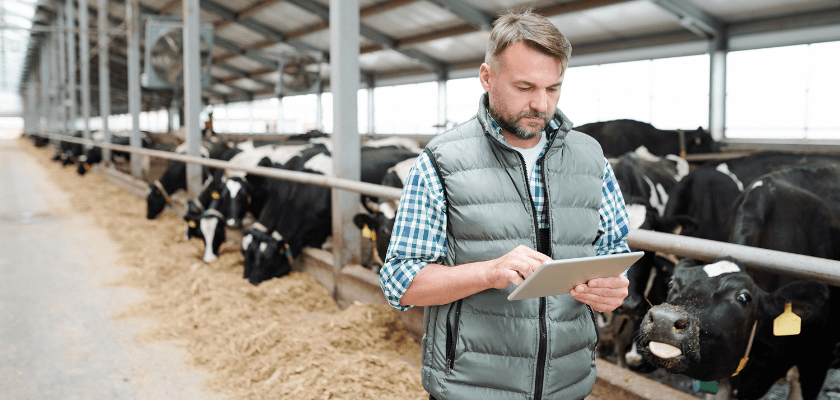Harness technology to make your dairy farm safer: 6 reasons to choose virtual training

Originally published in Milk Producer.
Technology has changed the way we work on the farm in ways we could never imagine. Tasks that were once grueling and labour-intensive can now be done by computers and machines. Animal welfare can now be predicted by artificial intelligence (AI). But outside physical tasks, can technology help solve one of the greatest challenges on the farm - recruitment of skilled labour and training to get new workers up to speed quickly and safely?
Yes! With virtual training, your farm can now train employees from anywhere, with just the click of a mouse. Online training makes education easily accessible to almost everyone and it couldn’t come at a more critical time.
Tackling labour shortages
It’s no secret that the province is experiencing a shortfall of skilled labour. And, they’re anticipating this issue will continue to worsen. In fact, the Canadian Agriculture Human Resource Council is forecasting that by the year 2029 the Canadian dairy industry will be running a shortfall of 3,000 domestic workers. Approximately 34% of our current workforce will be retiring and it is expected that we will have over 1,000 more jobs than workers available.[i]
Currently, more farm employers are being left with no choice but to hire unskilled, inexperienced, or temporary foreign workers. In an already dangerous profession, needing to rely on workers who lack experience or may have language barriers only increases the risks to their safety and your operations.
Virtual training can help bridge the gap for new workers, providing the right training to keep people safe and your farm running smoothly.
The benefits of virtual training
- It can save you money. A better-skilled and educated workforce can lead to higher overall safety, increased productivity, reduced downtime, and new opportunities for the farm to grow.
- It increases accessibility. This is especially true for operations with multiple or remote locations. Whether you are in the barn, house, or office, now the training can come to you.
- It minimizes participants' time away. There is no longer a need to travel to conventional training locations. Learners can be on the job minutes before and immediately after the training.
- It enables you to continuously upskill. Free online events and webinars like WSPS’ Safety Connections cover topics ranging from safe material handling to conducting hazard assessments in agriculture.
- You can work while you learn: We no longer need to choose between working or learning about the industry. With virtual opportunities, new workers can get the knowledge they need to do the task safely and get hands-on experience on the farm. For example, the University of Guelph’s Ridgetown Campus will be offering a Dairy Herdsperson Apprenticeship (DHA) program that aims to help plug the skills gap we face on the farm.
- It can be fun. Online training can utilize gamification to teach workers. For example, the University of Wisconsin-Madison is launching a new animal-handling training platform called Mooving Cows. This novel approach allows new workers to learn best cattle handling practices in a mobile game format where they take on the role of a herdsperson operating in various scenarios throughout a dairy farm. Players will form an understanding of how best to interact with cattle to maintain milk yield, reduce the cow’s stress and improve the player’s decision-making abilities on the farm.
While the flashy world of autonomous tractors, robotic milkers and AI-controlled monitoring systems are helpful, focusing on building training and closing experience gaps in your operation may be a more profitable solution than many think.
[1] Canadian Agricultural Human Resources Council/Conseil Canadien Pour Les Ressources Humaines En Agriculture. How Labour Challenges Will Shape the Future of the Dairy Industry: Agriculture Forecast to 2029. https://cahrc-ccrha.ca/sites/default/files/2021-11/Dairy_Reduced%20size_E.pdf
The information in this article is accurate as of its publication date.




